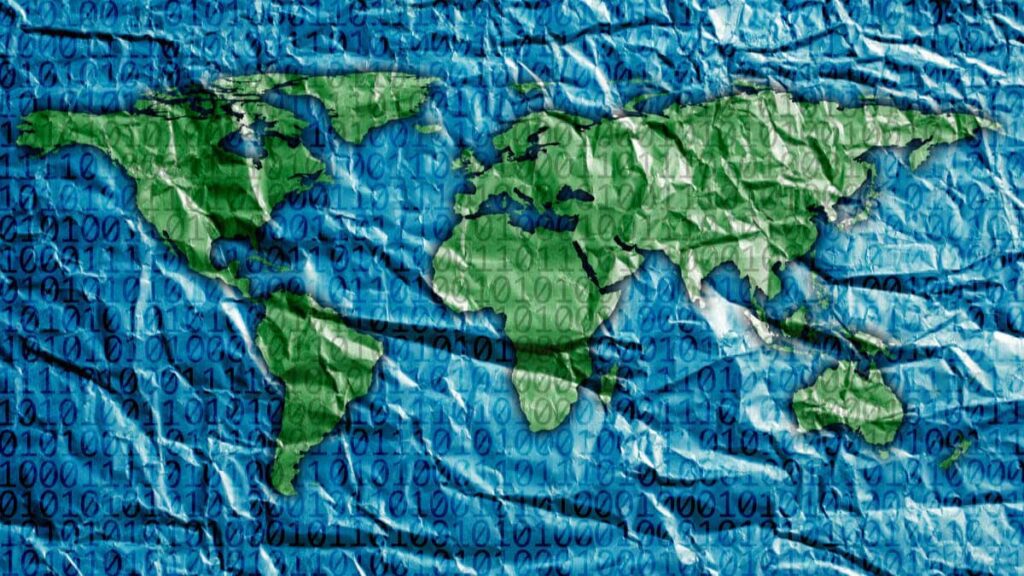
With every day that passes, millions of COVID-19 jabs are being administered around the globe.
With every day that passes, it seems as though citizens of the world can put one of history’s most damaging health crises within their rearview mirrors.
But that doesn’t in any way signify that we will drive into the sunset peacefully and wait for the credits to roll.
Technology proved that it could take on a threatening crisis; but now its role needs to be shifted back to the impending fight against climate change. With that in mind, no technologies have potential to improve more than artificial intelligence in climate change.
According to a report by the World Economic Forum (WEF), artificial intelligence (AI) refers to computer systems that “can sense their environment, think, learn, and act in response to what they sense and their programmed objectives.”
While the technology is raved about in all manners of the business and tech world, it has also been a massive help to many climate change-based industries and uses.
An example of this can be seen in India, where AI helped farmers receive 30 percent higher groundnut yields per hectare by providing information on preparing the land, applying fertilizer, and choosing sowing dates.
In parallel, artificial intelligence in climate change has allowed researched to reach 89 to 99 percent accuracy in pinpointing tropical cyclones, weather fronts and atmospheric rivers, the latter of which can cause heavy precipitation and are often hard for humans to identify on their own.

AI & Energy
One cannot talk of artificial intelligence in climate change without tackling its use within renewable energy systems, since the technology can take control of power fluctuations as well as improve energy storage.
The role AI will play is through tapping into decentralized energy sources and sending any excess electricity produced to the grid, while utilities direct that power to where it’s needed.
“Similarly, energy storage in industrial facilities, office buildings, homes, and cars can hold excess energy when demand is low, while AI deploys that power when generation is inadequate or impossible,” a report by the WEF explained.
The report further highlighted how an AI-centered system would be a potential game-changer.
“Shifting from an infrastructure heavy system to one centered on AI enables forecasting and control in seconds – not days – resulting in a grid that is more resilient and flexible when unforeseen events occur,” it added.

The ultimate goal of heightening the power of an AI-infused electrical grid is to develop it to automatically manage renewable energy without interruption and recover from system failures with little human involvement.
In parallel, wind power companies are utilizing the technology to allow each turbine’s propeller to produce more electricity per rotation by incorporating real time weather and operational data.
Thus, in the case of large wind farms, the front row’s propellers create a wake that decreases the efficiency of those behind them. Artificial intelligence will allow each propeller to recognize wind speed and direction coming from the remaining propellers and adjust accordingly.
Smart agriculture
This is where artificial intelligence will need a partner in crime: 5G.
Coupling together both technologies will only compliment each other, as third-party technologies such as drones, sensors, and analytics will thrive under them.
The emergence of 5G-powered drones will be the turning point for farmers far and wide; equipped with weed scanners and crop sprayers, they will have the ability to scan entire fields, apply pesticides at a more precise rate.
These drones would provide them with the information about the patches that need the most care, efficiently allocating their time accordingly.

This will also pave the way for intelligent field monitoring using AI-powered sensors which have the ability to detect, in real-time, data on weather, air, soil parameters, crop growth, and animal behavior. An example of this can be seen through sensors equipped onto drones to analyze nutrient status.
The data collected can be then merged with weather and several agronomical factors to apply an optimal quantity of fertilizer. Experiments done by Chinese telecom titan Huawei over the span of two years, showed that it was successful in decreasing the amount of nitrogen fertilizer by 10 percent without any yield loss.
Saving the seven seas
In terms of the ocean preservation and protection, a group of French researchers headed by Professor Ronan Fablet at IMT Atlantique in the western city of Nantes have been focusing on the influence of climate change on oceans since 2017.
IMT Atlantique were one of the winners of the AI for Earth EU Oceans award, an initiative for European research organizations focusing on ocean-related challenges. The grants equip these researchers with AI tools, and cloud computing resources to help develop their work.
These are part of Microsoft’s broader AI for Earth program, a five-year $50 million commitment, which has awarded more than 236 grants in larger projects since its inception two years ago.
According to Microsoft, the team at IMT Atlantique are developing data-driven and learning-based schemes for the modelling, analysis, and reconstruction of ocean atmosphere dynamics, by using satellite remote sensing data.

These improved models offer the potential to better understand the Earth’s climate, and the impact of climate change on oceans, from currents to CO2 concentrations.
“Data can help tell us about the health of our oceans, including temperature and rising sea levels. But we need technology’s help to capture this vast amount of data and convert it into actionable intelligence. Fundamentally, AI can accelerate our ability to observe ocean dynamics and how they are changing at a global scale,” Fablet said in Microsoft report.
IMT Atlantique’s team is using Microsoft Azure to get multiple ready-to-use resources to build 3D models of the ocean surface. In turn, these models are helping to test and validate new ideas and gain a deeper understanding of how ocean surfaces are changing.